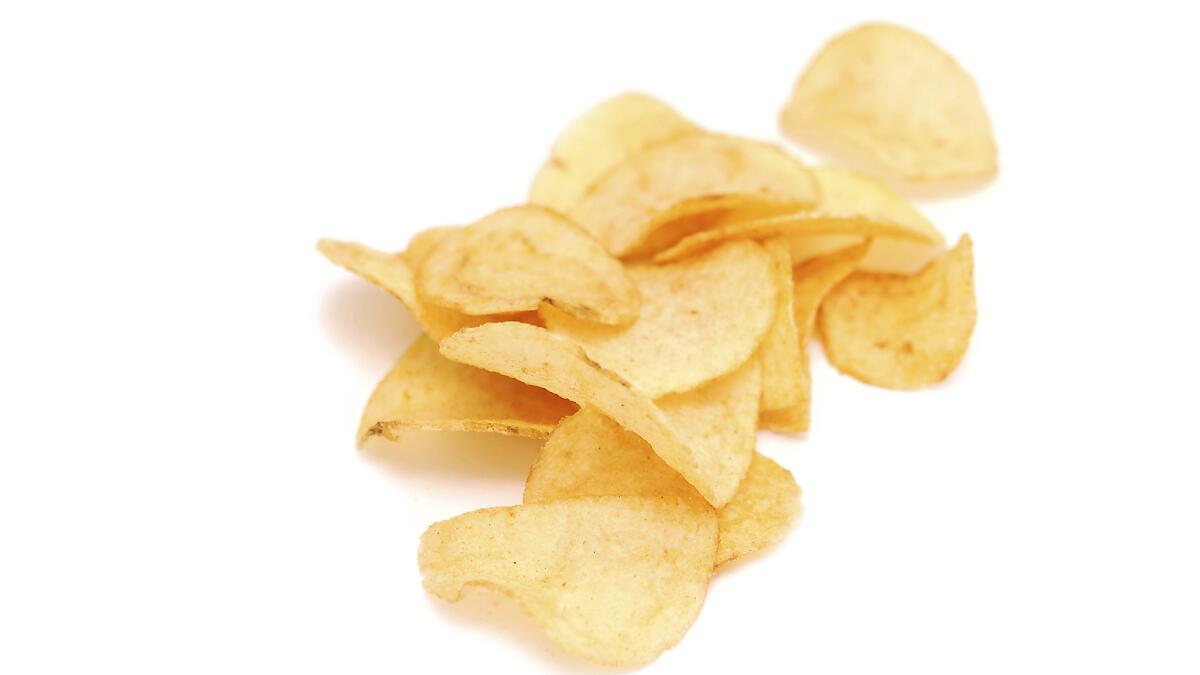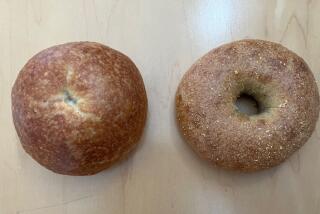Op-Ed: The snackification of <em>everything</em>

Symbols matter, which is why it’s important to acknowledge that our truest national emblem isn’t an eagle or a dollar sign or even a handgun, though each will have its proponents.
No, I see a partially unwrapped Twinkie, draped alluringly in cellophane, surrounded by sports drinks. Or a take-out pizza studded with Fritos, a single slice drawn forth with strings of cheese still connecting it to the pie as a metaphor for our shared devotion to fat.
Our national symbol, in other words, really ought to be a snack. Once a rare treat associated with special events such as fairs or birthday parties, snacking is now something akin to a national sport. In a recent article about soaring sales of snack foods, the Wall Street Journal cited government data showing that, while only 10% of Americans snacked three or more times a day in the late 1970s, the figure had risen to 56% in 2010.
Can it really be that low? Snacks seem to be everywhere, and in fact Hartman Group, a market research firm, found in a 2013 survey that 90% of consumers snack multiple times daily. In my experience, no gathering of small children is complete unless a parent has been designated to bring the snacks, as if a bunch of kids, who were made to run around, would expire from the slightest exertion without frequent doses of fat and carbohydrates.
Many snacks are nutritionally dubious, yet increasingly they are crowding out traditional breakfasts, lunches and dinners. About half of Americans replace meals with snacks at least three to four times a week, Hartman discovered. The U.S. Department of Agriculture, meanwhile, says American kids take in nearly 200 more calories a day from snacks than they did in the 1970s. No wonder so many are overweight.
But of course this isn’t just about food, for snacks, having turned eating into an empty sacrament, are now the most reliable insignia of our culture. Just the other day, I read that the owner of the New Republic wanted it to publish more “snackable” items. His staff quit en masse over his larger plans for the venerable publication, but can anyone doubt he had his finger on the American pulse? The market value of Twitter, with its 140 character limit, is around $23 billion, versus perhaps $2 billion for New York Times Co.
Once you start looking, it’s hard not to see snacking everywhere. Many of us who listen to music now prefer songs to albums, a preference abetted by the digital revolution in music distribution. In some quarters, at least, hookups are preferable to enduring relationships or even temporary monogamy. Disposable fashion from stores such as H&M, backed by Chinese manufacturing, has enabled us to snack on clothing.
Or thumb through almost any magazine; you’ll be struck by its hyperkinetic tenor — all those bite-sized items studded with sprightly images, like canapes topped with nuts. Magazines are full of this stuff, which makes them feel as if they offer a meal of hors d’oeuvres compared with the feast of text many once cooked up on their glossy pages.
The Internet, of course, has promoted snacking. As I write this, email alerts come and go, inviting me to take a break and snack on a little human interaction. I like reading books on an iPad, but the temptation to snack on some tweets after every few paragraphs can be hard to resist. Snacking can be habit-forming; any online document that I encounter longer than a screenful of text sets me to skimming impatiently.
We gravitate toward snacks because they’re fast, easy and require little commitment. They also taste good. Online, snackable items are easily digested by grazing readers, and just as easily shared — the way we once shared meals. In keeping with our demand for flexibility and immediate gratification, snacks are always available, require little investment and can be consumed without the time and consideration that used to go into more primitive forms of nourishment, such as sit-down dinners or books.
It’s been said that you are what you eat, and in some sense we Americans are becoming snacks, at least to the businesses that consume our labor. Companies that once had lasting relationships with workers nowadays often prefer outside contractors, or employees who can be rescheduled — or terminated — at the whim of management. Firms, in other words, prefer to snack on labor, a practice that makes it all the more difficult for workers to schedule (or pay for) meals.
Snacking suits the way we live — Hartman says 40% of adult meals excluding snacks are eaten alone — but it isn’t always satisfying. Even if they fill us up, snacks mostly just bloat us with their emptiness, which in turn leaves us wanting something more. Maybe it would be better if we waited for dinner, the way we used to, and then sat down to eat it with somebody we care about.
I’m going to work on this, I swear, just as soon as I grab a microwave chimichanga to tide me over. While I’m at it, I wonder what’s happening on Twitter?
Daniel Akst is an author and former Los Angeles Times columnist.Follow the Opinion section on Twitter @latimesopinion
More to Read
A cure for the common opinion
Get thought-provoking perspectives with our weekly newsletter.
You may occasionally receive promotional content from the Los Angeles Times.






